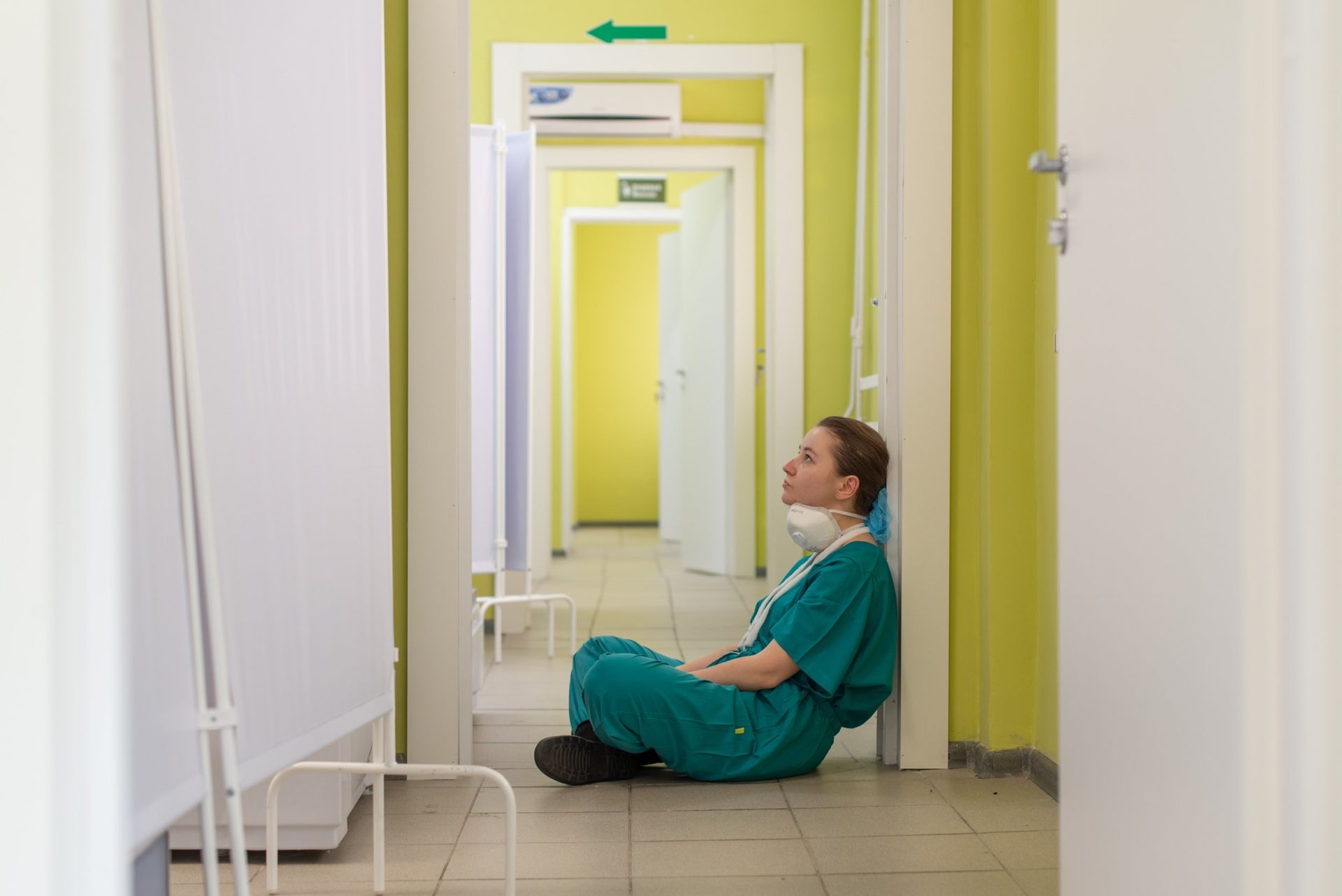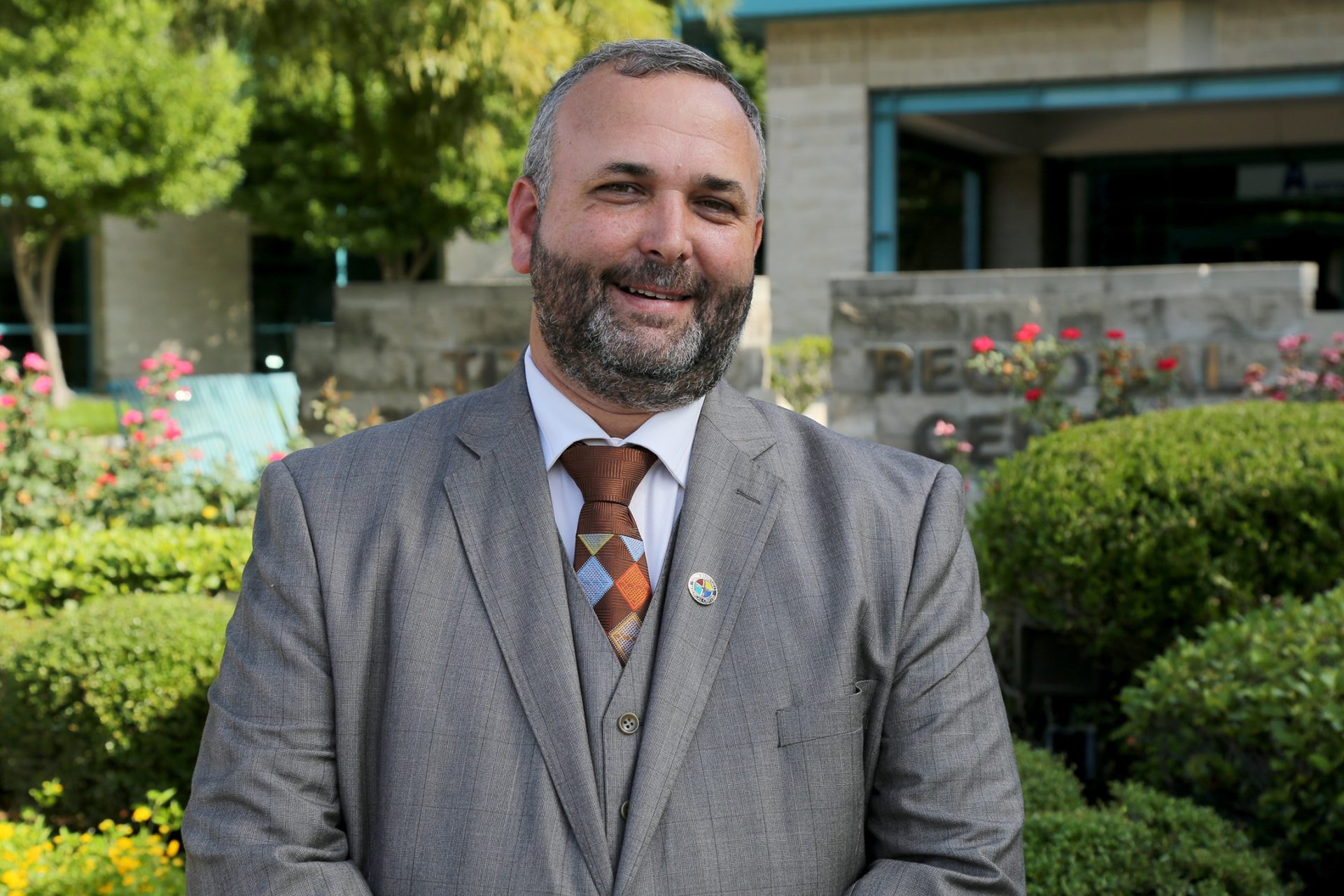
The phone rang with exciting news. The nurse director on the inpatient floor shared that a COVID-19 patient who once had a grim prognosis was being discharged in fifteen minutes. I sent emails and texts to our team members to meet me in the lobby so we could celebrate. Over one hundred team members lined the lobby – with some bringing quickly made confetti.
My wife, a team member in our vaccine clinic, shouted at me from across the lobby for music. The ‘Rocky’ theme seemed appropriate, but I quickly changed to Kool & the Gang’s “Celebration” – a great choice. We all began singing, clapping, and dancing as the patient came out of the door. A local business owner, he had been in our hospital for fifty-nine days fighting the virus cycling between the Emergency Department, ICU, COVID unit, and finally Inpatient Rehab.
When he saw our staff, both he and his wife were in tears as the team members were congratulating him, crying, thanking him, and wishing him well all the way down the line. The reason for our dedication and commitment to our community was right there in front of our eyes.
As the CEO of Titus Regional Medical Center (TRMC), a hospital in Mt. Pleasant, Texas, moments like these have been a silver lining on the front lines of rural Texas’ COVID-19 response. But unfortunately, scenes like these are more of an exception than the norm. In September, our final mortality data for the last week of the month was 26 deaths, the most in the seventy-year history of Titus.
When most people envision a rural Texas community like Mt. Pleasant, they think of green pastures, tall, majestic trees, a county fair, Friday night football games. The good life. All these features are true, but the COVID-19 pandemic has also revealed the vast inequities between rural and urban life. According to US County Health Ranking, the current lifespan for the five largest counties in Texas is 79.7 years. But in Titus County our four surrounding counties, the average lifespan is 76.2 years.
This 3.5-year difference is emblematic of the disparity between Texas rural and urban counties. COVID-19 has illuminated and exacerbated this disparity, with recent reports that showed rural COVID deaths are occurring at a rate of twice that of urban areas.
We are in the middle of our 4th surge in Titus County. The first surge was in May before many in Texas felt the wrath of this pandemic. The next three surges followed the state’s path of this pandemic normally about two weeks behind the Dallas metroplex.
Each surge has brought its own obstacles. The first surge was lack of testing; the second surge was limited PPE; the third surge was the inability to transfer higher acuity patients and limited staffing. For the current surge, our obstacles have been the same as the last surge but with a new deadly variable: ourselves!
It is easy for onlookers to view rural healthcare solely within the context of the pandemic, but the reason that COVID-19 deaths have been twice as high in rural areas runs far deeper than the virus alone. There are higher rates of obesity, high blood pressure, family history of heart conditions, and diabetes. These are a few of the many co-morbidities that people who take advantage of the “rural life” suffer from – including me.
Mortality rates are significantly higher in those who are obese and diabetic, and these conditions are significantly more common in rural areas. This leads to an overall percentage of persons infected with COVID-19 who are more likely to be older, obese, and/or diabetic, leading to a higher mortality rate than urban areas.
Underlying medical conditions are not the only factors in this disparity of mortality. Transportation, smoking, binge drinking, housing, and exercise are all factors in our health where rural communities are behind the curve of our urban counterparts.
In addition, the utilization of healthcare services is lower in rural areas, and this is not only due to the unavailability of services. Rural communities compared to urban are older, less mobile, have lower income, have higher uninsured rates (and may feel they cannot afford care), and have longer distances to travel to obtain health care.
Rural areas currently have significantly lower rates of vaccination against COVID-19, making them more vulnerable to infection, and resulting in larger geographic outbreaks. East Texas has a first dose vaccination rate of 49.2% compared to the Texas average of 72.7% and a fully vaccinated rate of 42.7% compared to the state average of 63.0%. Our county was delayed in early 2021 in receiving the vaccine, but our health system has been diligent in providing and promoting the vaccination. Our current rate is 52.8% for the first dose and 43.3% for fully vaccinated, but this still lags behind the national average by a large margin.
The one-two combo of higher rates of co-morbidities and lower vaccination have created a higher viral load and a greater burden of illness when they enter the healthcare system for treatment. Luckily, healthcare has become far better at fighting the virus over time. Our health system at Titus has pushed forcefully for patients to seek care immediately when they are concerned that they have been infected with COVID-19. Early treatment of an unvaccinated COVID-19 patient, especially with monoclonal antibodies (which rapidly decreases the viral load), leads to a very low hospitalization rate and mortality rate.
However, not all rural communities have the resources to provide this sort of intervention, which drives up the mortality rates for our communities.
The average level of education also tends to be lower in rural areas, which contributes to why so much anti-science sentiment has been able to take hold. Divisive politics has led to stubborn views on vaccination, social distancing, and the closing of businesses/events. Wearing of masks was approximately 50% less in rural communities.
I have personally seen how these numbers play out. Dinners with my close friends during this pandemic always included debate or negative comments about the pandemic with comparisons to flu and thoughts on mandates. My bible study last week with a few friends turned into a political debate on the vaccine.
The disparity in mortality has been difficult to accept, however, the difference could have been so much worse. Our county has led the twenty-seven counties in our region in a number of cases of COVID-19 per 100,000 population per the John Hopkins county website while maintaining the lowest mortality rate in the region. Titus County is currently at 1.77 compared to the state’s average of 1.62.
The reason for this is one of the many factors why I choose to live in a rural community: the resiliency of our community. Our physicians, nurses, clinical team, and administrative roles have worn many hats to ensure we take care of our friends, our families, and our neighbors. We have seen death at record numbers; however, we have saved so many more by the tireless efforts of our team and community.
TRMC is the last independent hospital in Northeast Texas. We have seen four hospitals close within forty miles over the last six years. We have also seen the rest of our counterparts join larger health systems. The ability to remain independent has allowed us to implement strategies on the fly and collaborate with our physicians to ensure consistent practices of medicine for all our patients with COVID-19.
TRMC created COVID huddles which reviewed each case of COVID-19 for admission and set protocols for the treatment specific to the day of the virus stage of the patient. Team members manned call centers in English and Spanish to call all of our outpatient COVID positive patients to track progress, identify deteriorating symptoms and recognize needs for food or medicine that needed to be addressed. Our ambulance team followed up with patients in their houses when beds became scarce during the fourth surge. As the Emergency Department became full – boarding up to nine patients due to limited capacity – our ambulatory and facility team turned our Registration Department into a satellite clinic in less than twenty-four hours to ensure resources were available for the community. Our health system could do what others in surrounding communities could not achieve: Stay open!
I believe our early aggressive efforts in administering Regeneron and establishing our own monoclonal antibody infusion center speaks to why we lead the region in survivability. We never wavered from our plan early on to huddle and coordinate care for every patient. We consistently treated all patients according to our algorithms created from information from the CDC and evidenced-based practice. This “pull yourself up by the bootstraps” mentality is what makes living in rural special.
As the next surge and flu season approaches, we have realized our hospital and other rural hospitals must address community health outside of our four hospital walls if we are going to minimize the mortality gap. Patient navigation, education, communication, collaboration, and listening to our community are critical for us to save lives. Spreading knowledge will be our best medicine. The last eighteen months have been unbelievable but the next eighteen months will be critical for us to save the “rural life” we all cherish so much.

Terry Scoggin
Terry Scoggin, CPA is the Chief Executive Officer of Titus Regional Medical Center in Mount Pleasant, Texas. This Joint Commission accredited 174-bed independent rural health system serves the Northeast Texas area through advanced diagnostics, imaging, obstetrical services, and medical and surgical care. TRMC is a Primary Stroke Center, Primary Heart Attack Center, Level III Trauma Center and a Level II Designated NICU & Maternal Services Center. Terry joined TRMC in 2012 as the Chief Financial Officer serving in various oversight roles in his tenure.






